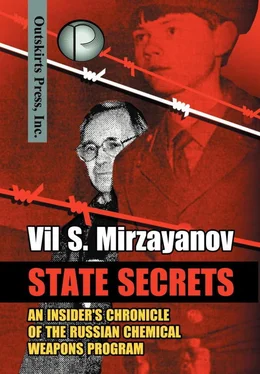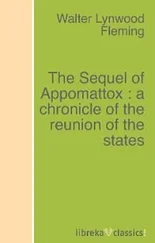Several days later, I set out to visit the regional magistrate, where an employee drew me aside to explain the essence of the problem. Finally a telephone call was made in my presence, and this resolved the whole problem in a flash. I was free to leave my job.
In the summer of 1965 I started at my new job by filling out specialized forms with lots of questions, including the following: “Where do your parents live, and if they have died, where were they buried?” Another one was: “Where do the brothers and sisters of the person filling out this questionnaire live, and where do they work?” The longer your list of relatives, the more time was required to start your real job because the Chekists have to spend more time to check everything out.
The purpose of the questionnaire was to grant a security clearance with access to classified documents, in exchange for signing an obligatory pledge to keep the secrets which would be entrusted to you in your job. It was necessary to renew this clearance every 5 years. You had to go through the same process all over again. Since no one made any notes when they filled out the questionnaire the first time, everyone had to be very careful not to allow any discrepancies to appear five years later, when filling out the new questionnaire. It’s entirely possible all the questionnaires were fully checked out by officials, since the original verification process took about 3 months.
Then I was given instructions about my duties as a secret holder. I was entirely prohibited from having any contacts with foreigners, from making any trips abroad, and from visiting any restaurants, exhibitions, museums, libraries etc. without a special permit from the Second Department.
I heard nothing from my future employer until after this process had run its course. Then they contacted me to let me know that I could go to a doctor for a medical checkup, to see if I met the requirements of the Post Office Box – the place of my future employment. The checkup was also complicated, with numerous analyses, and these procedures took about 2 weeks. My health turned out to be good enough.
And so, on November 30 th1965, I finally passed through the militarized guard post into the enterprise known as Post Office Box 702 for the first time. From there I went to the Analytical Department, which was in the main laboratory building (GLK), where access was guarded in the same way, and I had to show my pass once more.
On the way there, I was shaken by the appalling view of dirty old one-story brick buildings. On the left side of the path, pilot plants which had been constructed in the 19th century or earlier littered a large part of the territory occupied by the Post Office Box (which later became known as GOSNIIOKhT – pronounced ghos-nee-okht). Smoggy white clouds puffed up over dirty roofs of these buildings covered by black bitumen, and there was a whistling sound from the escape of compressed air of some unknown gas from numerous exhaust pipes. This gave it all a dangerous and oppressive aura you couldn’t shake off.
A revolting smell was leaking from a few open doors and broken windows. You could see people dressed in dirty jumpsuits with white skull caps on their heads inside these rooms and near the doors. From that first time until the last days of my residency at GOSNIIOKhT, I was never able to shake off the unpleasant sensation created by these buildings, which were already half destroyed by time. (Later I heard that some new, but terrible and featureless buildings were built in place of some of them).
The new nine-story administration building, which faces onto the Highway of Enthusiasts, is of necessity a modern architectural devil, but it only covered up the repulsive view of the decrepit ghost structures. All of those which remain standing were once jailhouses for political prisoners or sharashka. [10] The term “sharashka”was first introduced by Aleksandr I. Solzhenitsyn, The Gulag Archipelago, 1918-1956, An Experiment in Literary Investigation I-II (New York: Harper & Row, Publishers, 1973). Also see Ann Applebaum, Gulag: A History (New York: Doubleday, 2003). The renowned scientists Rudolf Udris, Peter Sergeev, Michael Nemtsov, and Boris Kruzhalov, who were the first to develop the hydro peroxide process for producing phenol and acetone in 1946, were working in such a chemical sharashka . Udris ultimately committed suicide. Sergeev was barely released from this sharashka when his son, Andrei P. Sergeev, who was also a chemist, was jailed there on charges of anti-Soviet agitation. See M.S. Nemtsov, “At First We Were Four People,” Chemistry and Life , no. 2 (1989); Andrei P. Sergeev, “How I Participated in Operation ‘Yprit,’” Izvestia , 11 August 1992, which chronicles the dumping of around twenty tons of bombs containing mustard gas.
Before the Second World War and later there was a factory there for the production of mustard gas. Eyewitness accounts document that in October 1941, the staff buried several metric tons of mustard gas in trenches near what is now the main laboratory building (the GLK), as German troops were approaching Moscow. No steps were taken to destroy or degrade the agent. It was simply dumped untreated into the ground.
The GLK is a three-story brick structure built in 1961. The building extends so that it is butts up to the tramway tracks, and trains are constantly rumbling by, creating a small but audible noise in the building and vibrations, which are a nuisance for those working with highly sensitive physical chemical instruments.
On the short end, the GLK is connected with another old three-story building, by a second story bridge which then turns sharply left and connects to yet another horrible old three-story building. This third building looks out on the Highway of Enthusiasts, and almost connects by cast iron rails with part of a bridge that was built across the rail line, shortly after World War II by German prisoners of war. From this bridge it is possible to get a good view of a large part of the GOSNIIOKhT territory, with its buildings. Numerous ventilation pipes are sprouting out of the roofs, direct evidence that a strong ventilation system is working in these buildings – the specters of the work of a chemical laboratory.
Aleksei Beresnev was the head of the Analytical Department, and he was also head of Chromatographic Laboratory 25. He briefly explained the goal of the work of his department and laboratory. Basically it consisted of developing methods for routine analyses at the experimental manufacturing site, and small scale laboratory analysis of the synthesis of chemical agents and their precursors. He also gave me instructions for compiling scientific research records and the basics of the secrecy regime. I was given two weeks to study the regime requirements and safety technique from numerous manuals and to pass an exam on the safety, medical, fire and other requirements for working independently. The exam was to be given by a commission chaired by Aleksander Shchekotichin, the Deputy Director of Science.
I had to go through numerous safety briefings, on fire and gas-handling technologies in special departments, the heads of which had to sign off on my papers, proving that I had satisfactorily passed through these routine procedures.
Also, I had to become familiar with their system of keeping records in the secret work journals. In the GLK, (as in the other scientific research and experimental corps), this was organized by the local branch of the First Department, [11] The First Department was operating under the control of the Deputy Director of the Security Regime, a KGB officer who only formally was subordinate to Director of GOSNIIOKhT. The Second Department was also operating under the supervision of the Deputy Director of the Security Regime.
which controlled every aspect of all systems of paperwork, including sending and receiving secret letters, reports, methodologies, instructions, and various dissertations, the secret library and archives.
Читать дальше












